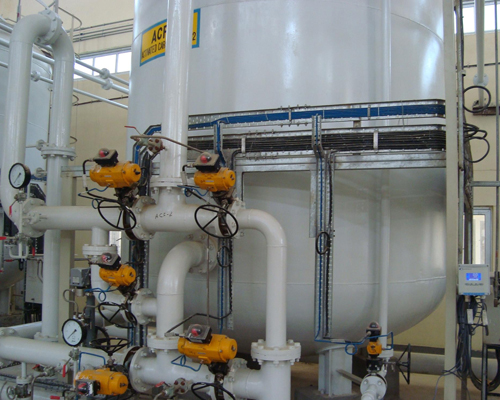
-
-
CALL US NOW
+91 78600 24711

Ever wondered why Earth gets called the Blue Planet? Water covers 70% of the Earth's surface. It is easy to see that there is a lot of water. The Earth's water contains 97% saline, which is 1,335,000,000 km3 in size, and 2% frozen freshwater, locked up in glaciers or polar ice cap, soil, etc. It is not available for use. Only 2,04,000 km3 freshwater is available for human consumption. This is between 0.5 and 1% of all freshwater. Water is used primarily for agricultural, industrial, and household purposes.
IGlobally, freshwater withdrawals amounted to 3,880 km3, India drawing 647 km3. Estimates suggest that between 2 and 20 percent of total water is used for industrial purposes. According to a reference, India uses 14km3 of water per year for industrial use, 48km3 for domestic purposes and 586km3 for agriculture. Water consumption in agriculture is over 80%; it's therefore important to improve water efficiency. Agriculture runoff is not a centralized source and therefore, treatment and reuse of this water are very difficult. Sewage is a source of water that can be recycled. In our country, however, only 1/3 of the sewage is being treated. Untreated wastewater discharge pollutes water bodies. India, China and some European and African nations are likely to face water shortages by 2025 due to the increasing demand for water and limited supply.
Water supply to industry would be limited in the event of scarcity. Even if industries recycle 50% of their wastewater, they could still make an additional 7 km3 water available to meet the growing water demand in India. This volume is equal to the water requirements of New Delhi for more than five years.
Water scarcity is a result of erratic climate change, poor water management and conservation strategies, and lack of uniform distribution across the globe. Water scarcity is either physical (not enough water to meet demand) or economic (enough water but no means to produce desired water quality). In order to achieve and sustain wastewater reuse, industries should do so as much as possible. Idealistically, all liquid streams would be discharged to zero. Many factors affect the effluent process. These include changing effluent quantity and quality, different constituents resulting from various manufacturing processes and uncertainty regarding the effectiveness of conventional treatment.
As manufacturing processes and technological advances continue to evolve, the composition of wastewater is changing. The efficient treatment of industrial wastewater is therefore critical to water quality management. By combining conventional and new technology, it is possible to treat many different effluents. As an example, conventional treatment reduces organic constituents, inorganic solids, and coke oven wastewater. Novel adsorbents reduce constituents specific to the source. This hybrid treatment could help recycle difficult-to-treat waste water.
ZLD is a new alternative that has emerged to reduce water consumption in the industry. Zero Liquid Discharge, as its name suggests, eliminates liquid waste from the entire system. ZLD involves treating wastewater, reusing it, and then concentrating and disposing of the residues in a solid form. For the treatment of industrial waste water, bioprocesses or membrane filtration solutions are used. Thermal technologies such as multi-effect evaporator and mechanical vapour compression (MVR) can be used to concentrate the inorganic constituents. It helps industries maximise their water recovery.
Citizens, industries and authorities can take a variety of measures to make a significant change in water conservation. Water is a precious resource. The first step is to recognize this and reuse water on a personal level as well as an organizational one. Every drop counts!